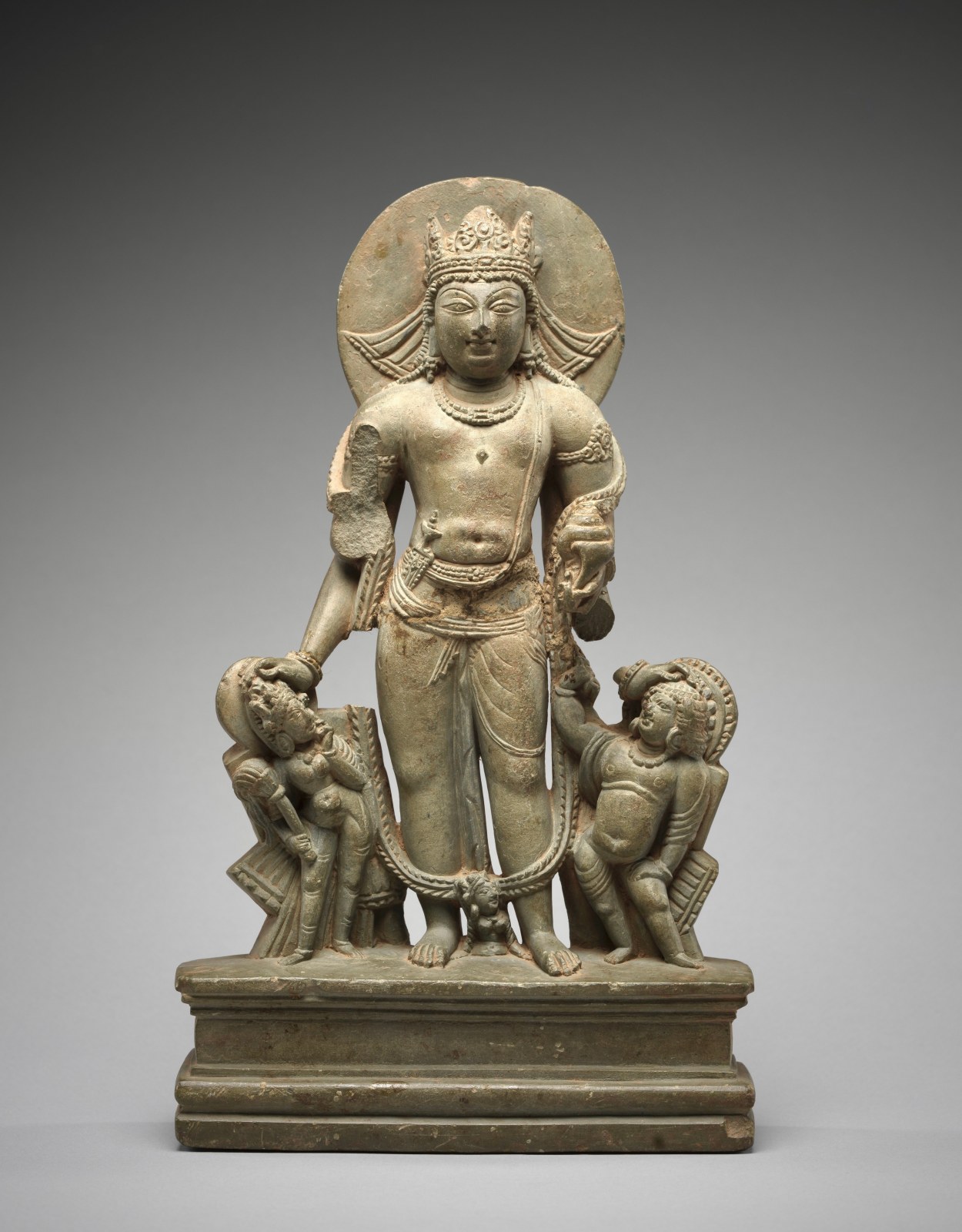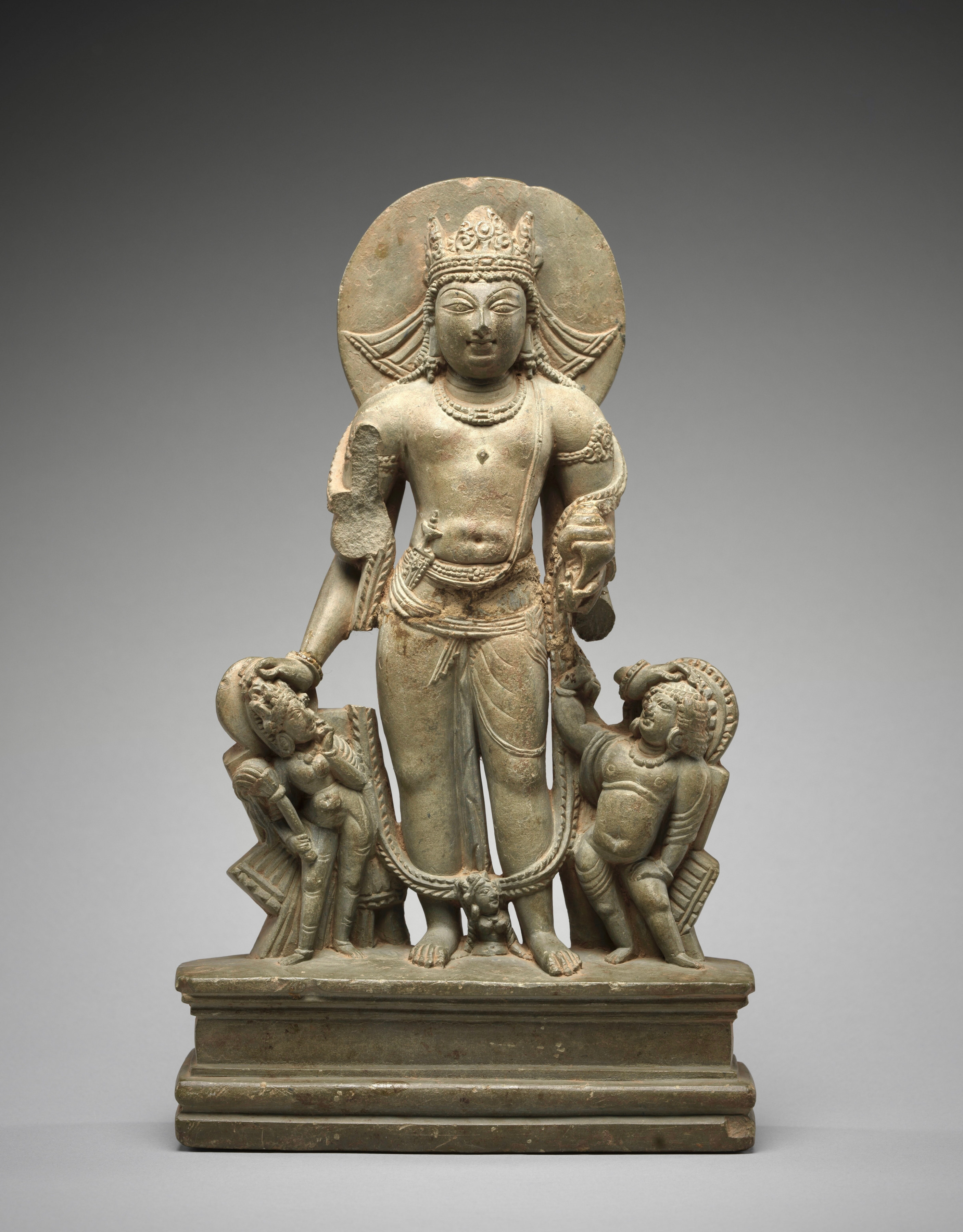
Provenance:
Peter Marks, New York
American Private Collection, acquired in 1973
Vishnu is wearing a diaphanous dhoti with horizontal ribbed sash and beaded belt holding a dagger on his hip, beaded necklaces and armbands, a sacred thread (upavita) falling down the left side of his torso, and bud-shaped ear ornaments. He is adorned with a jeweled tripartite crown (kiritamukuta) securing his finely-curled hair and with sashes billowing in relief on the circular nimbus. His youthful body is subtlely modeled, with a muscularity characteristic of the Kashmiri style, a blend of both Gandharan and Gupta stylistic influence.
The four-armed divinity holds the conch in his primary left hand; the primary right hand is fragmentary but would have held a lotus. His lower arms rest upon the heads of his personified attributes, the mace and the wheel. On the left we see Gadadevi symbolizing the power of intellect, knowledge, discipline, and the overcoming of obstacles. As Vishnu’s mace, she embodies the divine force that protects and upholds righteousness. On the right is Chakrapurusha, the sentient form of the discus of Lord Vishnu, the ultimate weapon of destruction, protection, and authority. He is guardian of Dharma, dispenser of divine justice, and bestower of wisdom. Both figures are standing in a lively tribhanga pose and are strikingly animated as they gaze up adoringly at the Preserver and Protector of the universe.
The molded rectangular base also supports the earth Goddess Prithvi, emerging between the legs of Vishnu and gazing to the right. Prithvi is an archetypal Mother Goddess, one of the most important deities in the historical Vedic religion. The scale of this work suggests that its portability might allow for its use in private shrines or for pilgrims to transport during their wanderings.

